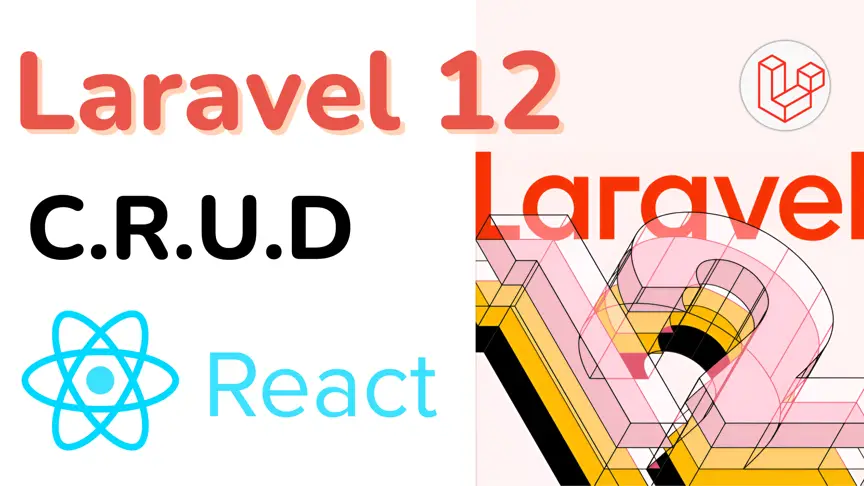Introduction to Laravel: A Comprehensive Guide

Kritim Yantra
Mar 21, 2025
Laravel is a leading PHP framework renowned for its elegant syntax, robust features, and ability to streamline web development. Whether you're new to programming or a seasoned developer, Laravel offers tools and functionalities that make building web applications both efficient and enjoyable. In this blog post, we’ll dive into what Laravel is, its history, key features, and how to get started. We’ll focus on a general introduction to Laravel, spotlighting Laravel 12 as the latest version, and briefly speculate on the future.
What is Laravel?
Laravel is an open-source PHP framework that simplifies common web development tasks such as routing, authentication, caching, and session management. It adheres to the Model-View-Controller (MVC) architectural pattern, which organizes code into distinct layers—data (Model), presentation (View), and logic (Controller)—enhancing maintainability and scalability.
History and Evolution
Created by Taylor Otwell and first released in 2011, Laravel has evolved significantly over the years:
- Laravel 1 (2011): Laid the foundation with core concepts.
- Laravel 4 (2013): Introduced a modular structure using Composer, a PHP dependency manager.
- Laravel 5 (2015): A major release with improved performance and new features.
- Laravel 8 (2020): Brought innovations like Laravel Jetstream for authentication scaffolding.
- Laravel 12 (2025): The latest version, offering enhanced performance and developer experience.
Each release has refined the framework, incorporating community feedback and adapting to modern web development needs.
Key Features of Laravel
Laravel stands out due to its rich feature set, including:
- Eloquent ORM: A sophisticated implementation of the active record pattern for seamless database interactions.
- Blade Templating Engine: A lightweight yet powerful tool for creating dynamic, reusable views.
- Artisan CLI: A command-line interface to automate repetitive tasks like migrations and seeding.
- Routing: An expressive and flexible system for defining application routes.
- Middleware: Filters for managing HTTP requests and responses.
- Authentication and Authorization: Built-in solutions for user login and permissions.
- Testing: Native support for PHPUnit, simplifying unit and integration testing.
- Security: Robust defenses against threats like SQL injection, XSS, and CSRF attacks.
Why Choose Laravel?
Laravel’s popularity stems from several advantages:
- Developer-Friendly: Its clean, expressive syntax accelerates learning and development.
- Scalability: Suitable for everything from small projects to enterprise-level applications.
- Community Support: A large, active community provides extensive resources and packages.
- Security: Built-in protections reduce vulnerability risks.
- Performance: Optimizations and caching boost application speed.
- Ecosystem: Seamless integration with tools like Vue.js, React, and more.
Getting Started with Laravel
To begin using Laravel, you’ll need PHP and Composer installed on your system. Here’s a step-by-step guide to set up a new project:
- Install Composer: Download and install it from getcomposer.org.
-
Create a Laravel Project: Open your terminal and run:
Replacecomposer create-project --prefer-dist laravel/laravel myLaravelAppmyLaravelAppwith your project’s name. -
Serve the Application: Navigate to the project directory and start the development server:
Visit http://localhost:8000 in your browser to see your new Laravel app.cd myLaravelApp php artisan serve
Basic Concepts
Mastering Laravel starts with understanding its core concepts:
- MVC Architecture:
- Model: Manages data and business logic.
- View: Displays the data to the user.
- Controller: Handles user input and interactions.
- Routing: Defined in
routes/web.phpto map URLs to actions. - Controllers: Logic handlers for specific routes.
- Views: Dynamic templates created with Blade in
resources/views. - Migrations: Version control for database schemas, stored in
database/migrations.
Example: Creating a Basic Route and Controller
Let’s create a simple “Hello, Laravel!” page to see MVC in action:
Define a Route
Route::get('/hello', 'App\Http\Controllers\HelloController@index');Create a Controller
php artisan make:controller HelloControllerEdit the Controller
<?php
namespace App\Http\Controllers;
use Illuminate\Http\Request;
class HelloController extends Controller
{
public function index()
{
return view('hello');
}
}
Create a View
<h1>Hello, Laravel!</h1>
Now, visiting /hello in your browser will display “Hello, Laravel!” This example showcases how routes, controllers, and views work together.
Latest Features in Laravel 12
Released in 2025, Laravel 12 introduces:
- Improved Performance: Core optimizations for faster execution.
- Starter-kits: New Starter Kits Like Laravel with reactjs, vuejs and livewire.
- Updated Dependencies: Compatibility with the latest PHP versions.
Community and Resources
Laravel’s thriving ecosystem offers ample support:
- Official Documentation: Detailed guides at laravel.com/docs.
- Laracasts: Video tutorials for all skill levels.
- Laravel News: Updates and insights via blog and newsletter.
- GitHub Repository: Explore or contribute at github.com/laravel/laravel.
Conclusion
Laravel is a versatile, powerful framework that simplifies PHP web development. With its extensive features, strong community backing, and comprehensive resources, it’s an ideal choice for developers at any level. While Laravel 12 is the latest version as of 2025. Whether you’re crafting a small site or a complex enterprise solution, Laravel equips you with the tools and flexibility to succeed.
Start exploring Laravel today, and join a community that’s shaping the future of web development!
Comments
No comments yet. Be the first to comment!
Please log in to post a comment:
Sign in with GoogleRelated Posts

 Kritim Yantra
Kritim Yantra
 Kritim Yantra
Kritim Yantra
